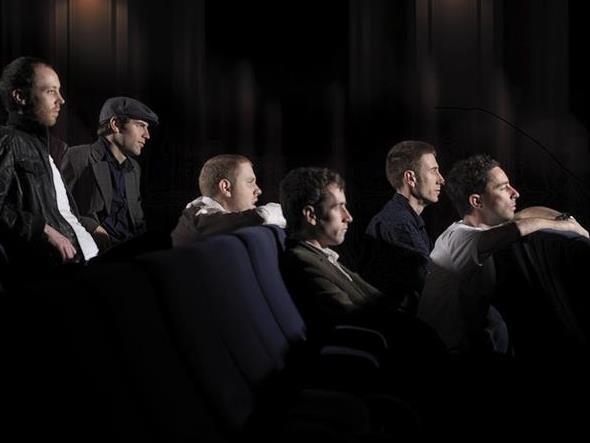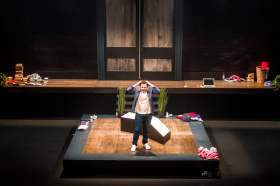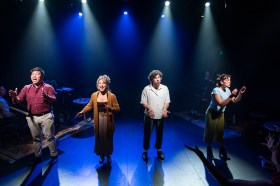Jason Swinscoe formed the Cinematic Orchestra in 1999 and the electro-jazz ensemble have gone on to become one of the few collectives of their genre to seep through the gaps into mainstream culture. Their success is thanks, in part, to their evolution from masters of a niche genre to creators of rich evocative soundscapes.
It is that evolution that puts the Cinematic Orchestra in a genre all their own. Multilayered musicianship drawing in jazz, classical, acoustic contemporary and soul the collective has garnered fans from across all genres. They may fail to impress those looking for one or the other, but for those interested in a collage, it might not get much better than this.
In one of the first performances of the Melbourne Festival’s music program on Friday night at Hamer Hall, the Cinematic Orchestra was successfully backed by Philharmonia Australia, meaning there was no shortage of technically brilliant musicians on stage. Particularly engaging was the drumming of Luke Flowers and the vocals of Heidi Vogal.
Kicking off with ‘Burn Out’ and no vocalist in sight, Vogal entered the stage late in the song, with little fanfare and minimal stage presence. With a voice like hers, you don’t need much in the way of diva behaviour to impress your audience. With what seemed like no effort at all, her voice added to the already pulsating opening track, which built to her vocal climax. ‘Breathe’, where her vocals could shine, was also a highlight and ‘Familiar Ground’ made use of her powerful voice, but was lacking lyrically.
The long, and often jarring, saxophone solos by Tom Chant were technically gleaming but perhaps went on for a touch too long. Still, followed by the mournful strings of the Philharmonia Australia, the combination was a hot mess of jazz followed by a soothing ointment of melancholy.
Larry Brown, whose track ‘Music Box’ was a welcome outcast after a barrage of electro-jazz, was a late entry to the performance and was at times drowned out by the cacophony of other musicians. When he was finally given his time, he was the best moment of the night.
The encore left a little to be desired. If a band leaves out their biggest song and then leaves the stage, it’s hardly worth the effort of the applause to bring them back out – you know they’re coming.
There has been some controversy among fans about the version of ‘To Build a Home’ the band’s biggest hit, which we heard on Friday night. While the wonderfully simplistic version by Larry Brown was beautiful, even if it was someone drowned out by the intensity of the orchestra toward the end, the building crescendo of the original was what most evocative about the original track.
After a simple and largely short – for just over 1 hour – performance at Melbourne’s beautifully refurbished Hamer Hall, fans were delighted, rising for a standing ovation in praise of a band that doesn’t know quite what it wants to be and is all the better for it.
3.5 stars out of 5
Cinematic Orchestra at Melbourne Festival11 October 2013 at Hamer Hall
For more information visit: http://www.melbournefestival.com.au/
Image: Cinematic Orchestra





